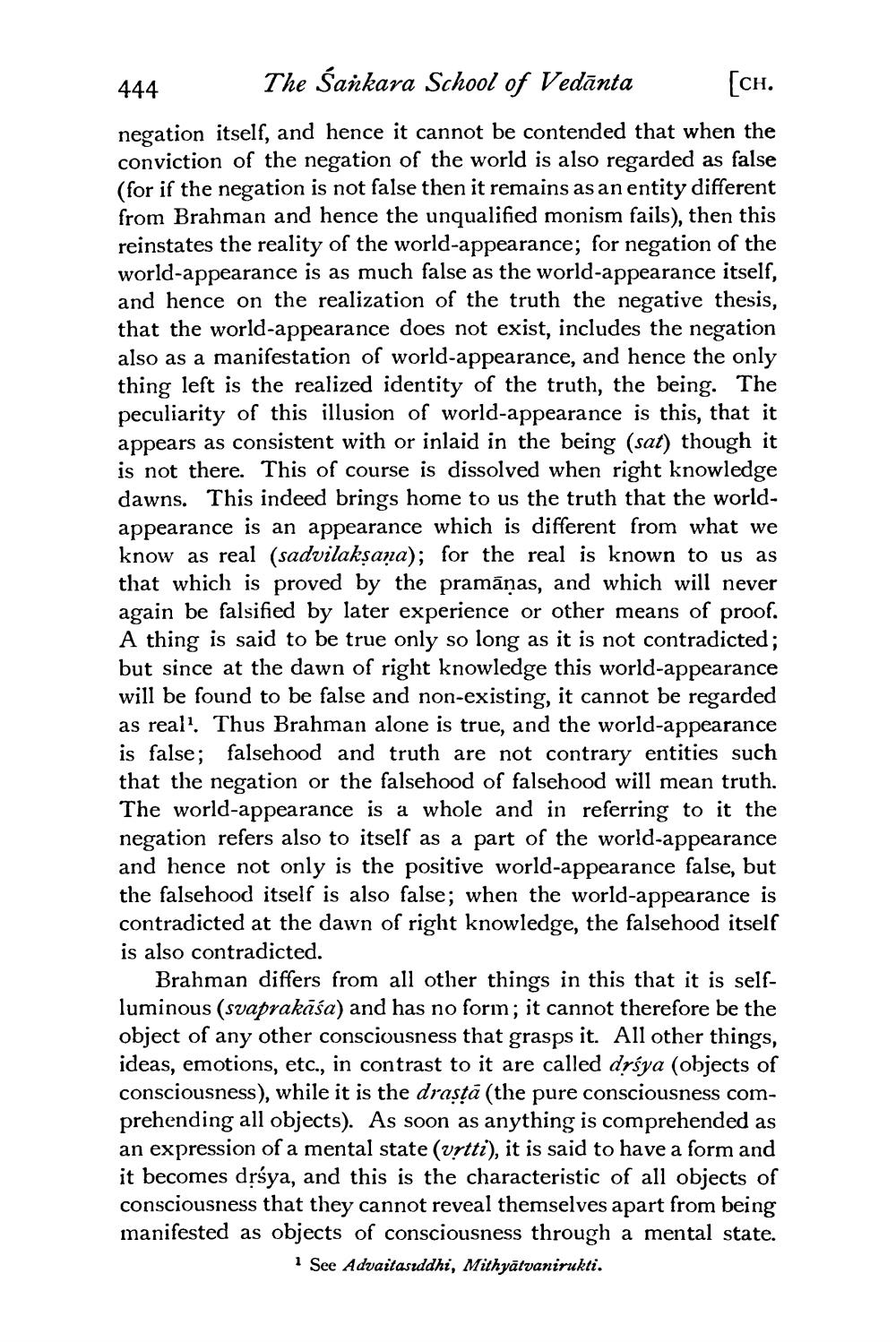________________
444
The Sankara School of Vedānta
[CH.
negation itself, and hence it cannot be contended that when the conviction of the negation of the world is also regarded as false (for if the negation is not false then it remains as an entity different from Brahman and hence the unqualified monism fails), then this reinstates the reality of the world-appearance; for negation of the world-appearance is as much false as the world-appearance itself, and hence on the realization of the truth the negative thesis, that the world-appearance does not exist, includes the negation also as a manifestation of world-appearance, and hence the only thing left is the realized identity of the truth, the being. The peculiarity of this illusion of world-appearance is this, that it appears as consistent with or inlaid in the being (sat) though it is not there. This of course is dissolved when right knowledge dawns. This indeed brings home to us the truth that the worldappearance is an appearance which is different from what we know as real (sadvilaksana); for the real is known to us as that which is proved by the pramānas, and which will never again be falsified by later experience or other means of proof.
A thing is said to be true only so long as it is not contradicted; but since at the dawn of right knowledge this world-appearance will be found to be false and non-existing, it cannot be regarded as reall. Thus Brahman alone is true, and the world-appearance is false; falsehood and truth are not contrary entities such that the negation or the falsehood of falsehood will mean truth. The world-appearance is a whole and in referring to it the negation refers also to itself as a part of the world-appearance and hence not only is the positive world-appearance false, but the falsehood itself is also false; when the world-appearance i contradicted at the dawn of right knowledge, the falsehood itself is also contradicted.
Brahman differs from all other things in this that it is selfluminous (svaprakāśa) and has no form; it cannot therefore be the object of any other consciousness that grasps it. All other things, ideas, emotions, etc., in contrast to it are called drśya (objects of consciousness), while it is the drastā (the pure consciousness comprehending all objects). As soon as anything is comprehended as an expression of a mental state (vrtti), it is said to have a form and it becomes drśya, and this is the characteristic of all objects of consciousness that they cannot reveal themselves apart from being manifested as objects of consciousness through a mental state.
i See Advaitasuddhi, Mithyātvanirukti.




